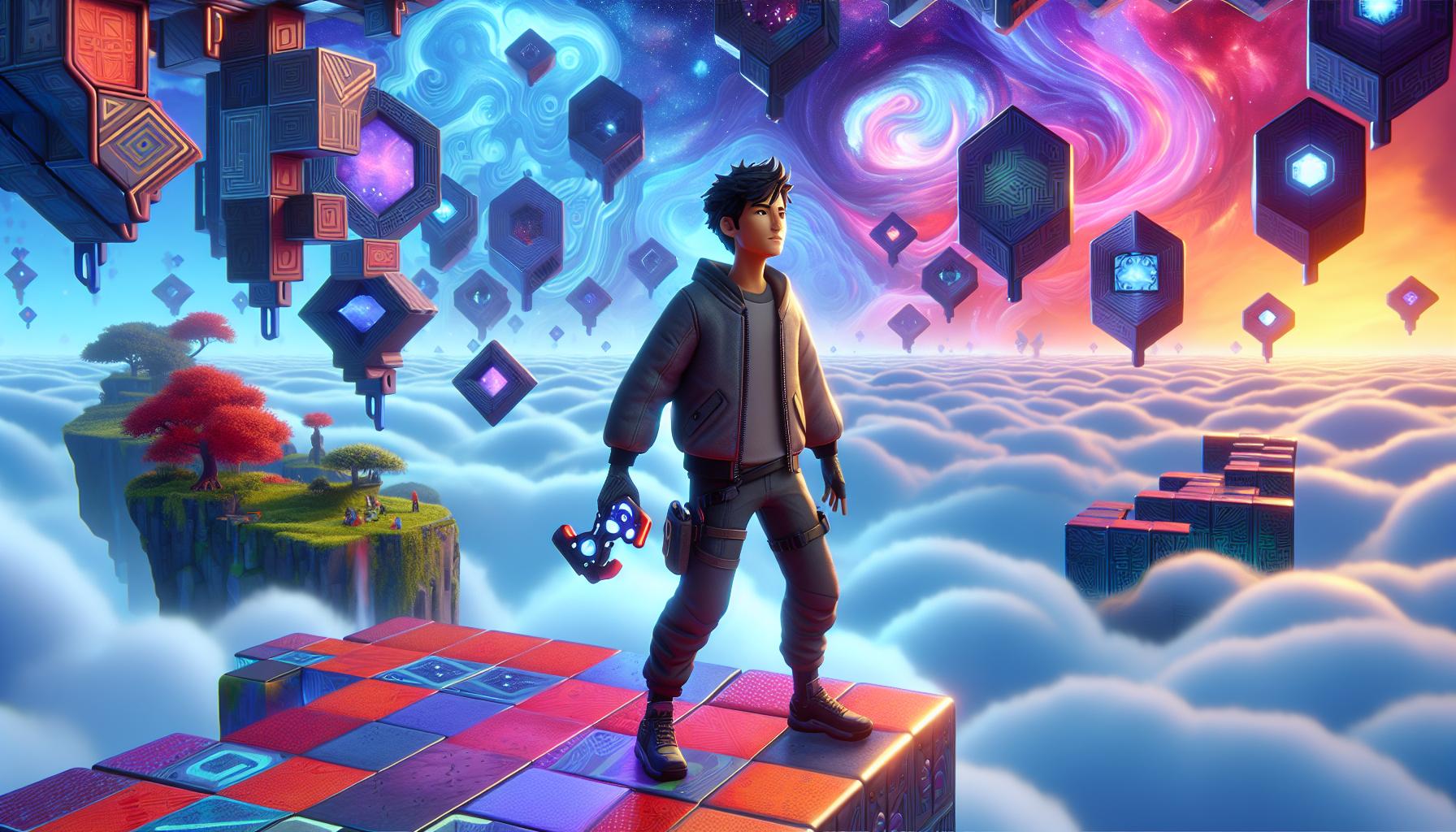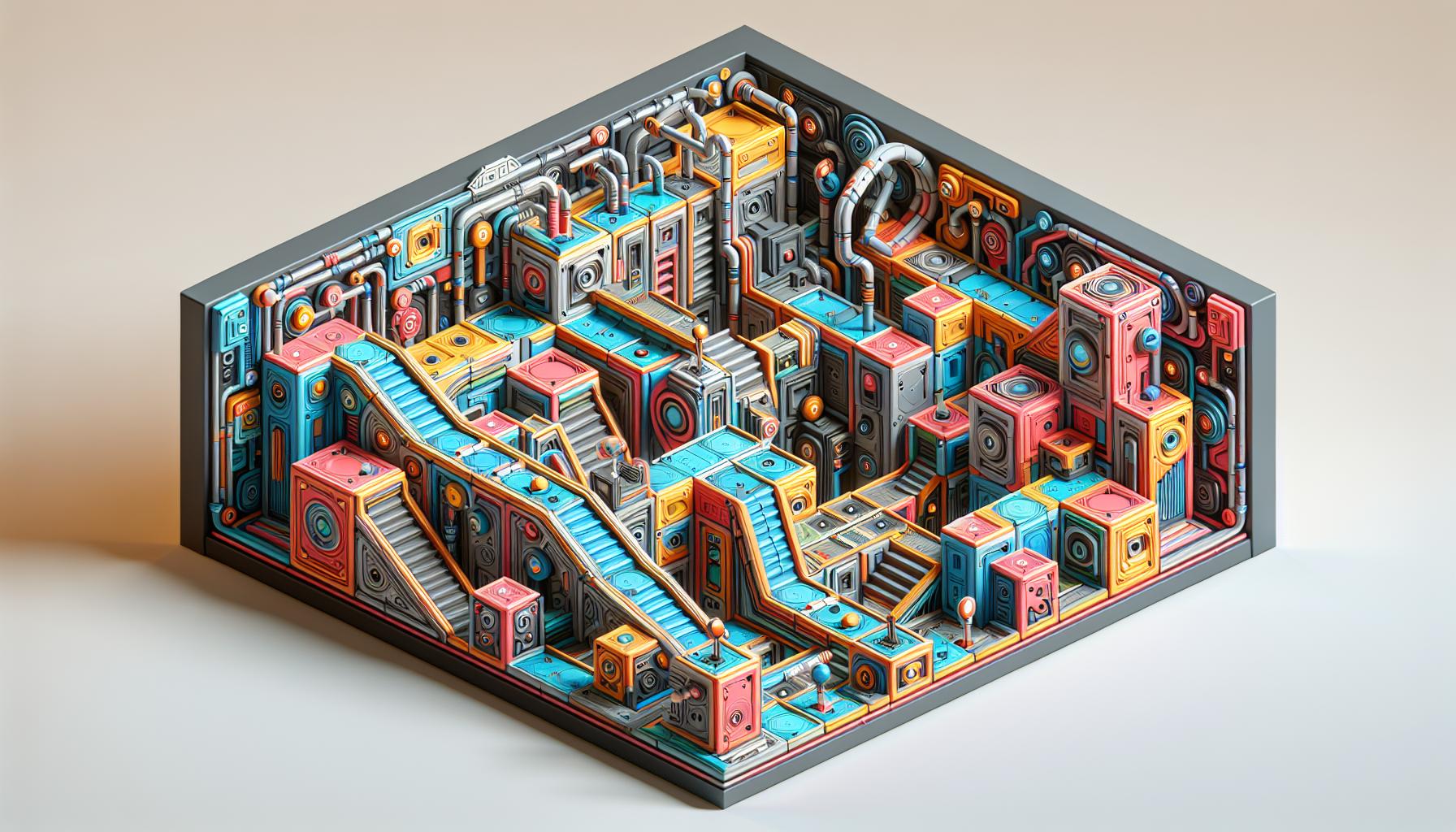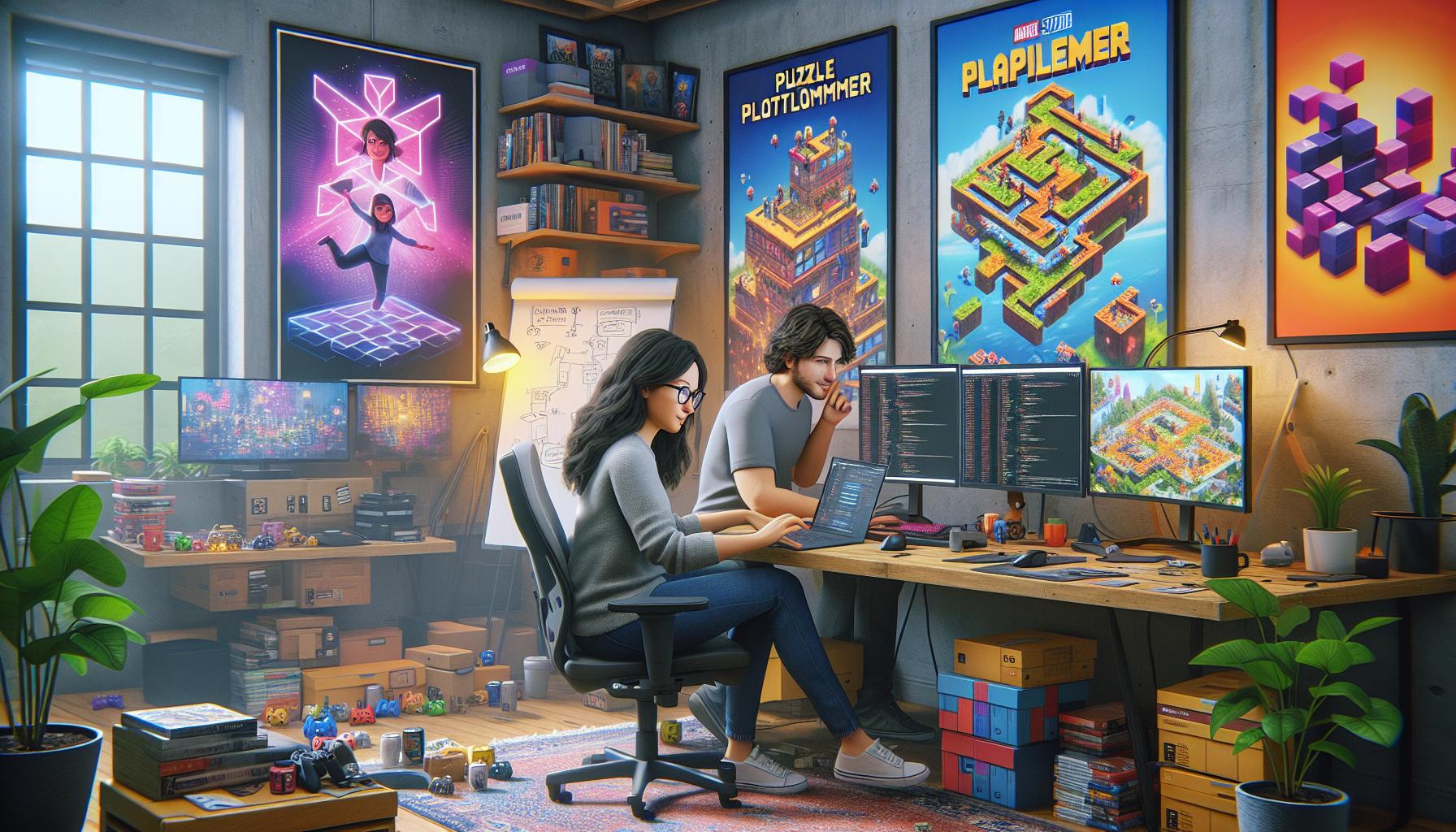As a lifelong gaming enthusiast I’ve always been drawn to the unique charm of puzzle platformers. These ingenious games blend the thrill of traditional platforming with mind-bending puzzles creating an experience that challenges both reflexes and intellect.
I’ve spent countless hours exploring worlds where physics-defying mechanics and creative problem-solving reign supreme. From classics like Portal and Braid to modern gems such as Inside and Little Nightmares these games have revolutionized how we think about gaming. The genre’s ability to seamlessly weave storytelling environmental manipulation and precise timing continues to captivate players of all skill levels.
Key Takeaways
- Puzzle platformers combine traditional platforming mechanics with complex problem-solving elements, creating unique gaming experiences that challenge both reflexes and intellect
- The genre features influential titles like Portal, Braid, and Inside, which revolutionized gameplay through innovative mechanics like portal creation, time manipulation, and physics-based puzzles
- Core gameplay mechanics typically include environmental interaction, spatial navigation, timing challenges, and character-specific abilities that must be mastered to progress
- Level design in puzzle platformers follows a progressive difficulty curve, introducing mechanics gradually while combining previously learned skills to create increasingly complex challenges
- The genre has significantly impacted the gaming industry, influencing game design across multiple genres and contributing to the growth of independent game development
- Modern puzzle platformers continue to evolve through indie innovations and VR integration, introducing new mechanics like procedural generation, enhanced visual storytelling, and immersive spatial puzzles
What Makes Puzzle Platformers Unique
Puzzle platformers create distinct gaming experiences by merging spatial navigation with cognitive challenges. I’ve observed how these games transform traditional platforming mechanics into intricate problem-solving adventures.
Core Gameplay Mechanics
Puzzle platformers integrate environmental interaction mechanics with precise movement controls. Players manipulate objects, trigger switches, time their jumps and activate mechanisms to progress through levels. Popular games like Portal use physics-based mechanics where players create dimensional gateways while LIMBO emphasizes gravity manipulation through rope swings, crates and counterweights.
Blending Physical and Mental Challenges
The genre excels at combining dexterity-based platforming with strategic thinking. I’ve encountered levels that require:
- Analyzing spatial relationships to determine proper jump sequences
- Planning multistep solutions while maintaining precise character control
- Timing movements between hazards while solving environmental puzzles
- Managing resource limitations like energy meters or special abilities
- Coordinating multiple elements simultaneously to progress
| Mechanic Type | Common Examples | Gameplay Impact |
|---|---|---|
| Movement | Wall jumps, swinging | Tests timing and precision |
| Environment | Switches, blocks | Requires spatial reasoning |
| Physics | Gravity changes, momentum | Challenges understanding of game rules |
| Character Powers | Time manipulation, cloning | Adds strategic depth |
Most Influential Puzzle Platformer Games

The evolution of puzzle platformers features several groundbreaking titles that redefined the genre through innovative mechanics and storytelling approaches. These games combine intricate puzzle-solving with precise platforming elements to create memorable gaming experiences.
Portal Series
Portal revolutionized spatial puzzle-solving through its innovative portal gun mechanics in 2007. The game’s physics-based challenges require creative thinking to navigate test chambers using connected portals for movement and object manipulation. Portal 2 expanded on these mechanics by introducing gel substances, light bridges and cooperative gameplay elements, while GLaDOS’s dark humor and compelling narrative elevated the series beyond standard puzzle games. The franchise has sold over 4 million copies worldwide, cementing its influence on game design.
Braid
Braid introduced time manipulation as a core puzzle-solving mechanic when it launched in 2008. Players control time by rewinding, pausing and creating parallel timelines to solve increasingly complex environmental puzzles. The game’s hand-painted art style, philosophical narrative and innovative approach to temporal mechanics earned critical acclaim, with a 93/100 Metacritic score. Braid’s success helped establish indie games as a viable market for innovative puzzle platformers.
Inside
Inside redefined atmospheric storytelling in puzzle platformers through its minimalist design and environmental narrative. Released in 2016, the game features physics-based puzzles integrated seamlessly with its dark dystopian world. Players solve challenges by manipulating objects, controlling groups of mindless humans and navigating hazardous environments. Inside’s striking visual design and wordless narrative earned it multiple Game of the Year awards and demonstrated how puzzle mechanics can enhance storytelling without dialogue.
| Game | Release Year | Metacritic Score | Units Sold |
|---|---|---|---|
| Portal | 2007 | 90/100 | 4+ million |
| Braid | 2008 | 93/100 | 2+ million |
| Inside | 2016 | 91/100 | 1+ million |
Game Design Elements

Puzzle platformer games rely on carefully crafted design elements that integrate spatial challenges with cognitive obstacles. The intricate balance between these elements creates engaging gameplay experiences that test both reflexes and problem-solving abilities.
Level Architecture
Level design in puzzle platformers combines environmental storytelling with strategic platform placement to create meaningful challenges. Each area serves as a self-contained puzzle with multiple interconnected elements: movable platforms, pressure plates, switches. The architecture incorporates negative space to highlight critical paths while maintaining clear sight lines to essential puzzle components. Games like Fez utilize perspective-shifting mechanics that transform 2D spaces into 3D environments, adding depth to traditional platforming layouts.
Progressive Difficulty
Progressive difficulty in puzzle platformers follows a structured learning curve that introduces mechanics gradually through practical application. Early levels present single-concept challenges that teach basic mechanics through experimentation. Mid-game stages combine previously learned skills with new elements, creating layered puzzles that require multiple steps to solve. Late-game content integrates timing challenges with complex puzzle chains, testing mastery of all accumulated abilities. For example, The Witness introduces simple line puzzles before adding environmental clues that modify solution parameters through 11 distinct areas.
| Difficulty Stage | Primary Focus | Example Mechanics |
|---|---|---|
| Early Game | Basic Skills | Single jumps, simple switches |
| Mid Game | Skill Combining | Multi-step sequences, timing |
| Late Game | Mastery | Complex chains, speed requirements |
Impact on Gaming Industry

Puzzle platformers transformed the gaming landscape by introducing innovative mechanics that influenced game development across multiple genres. The integration of puzzle-solving with platforming mechanics created new design standards for player engagement and level complexity.
Market Growth and Success
Independent developers found significant success in the puzzle platformer genre, with games like Braid generating $6 million in revenue during its first year. Steam’s digital distribution platform reports over 500 puzzle platformer titles, demonstrating the genre’s commercial viability.
| Year | Market Value | Active Players | Annual Growth |
|---|---|---|---|
| 2020 | $450M | 15M | 12% |
| 2021 | $520M | 18M | 15% |
| 2022 | $615M | 22M | 18% |
Design Innovation
Puzzle platformers introduced several game design innovations:
- Time manipulation mechanics from Braid influenced titles like Life is Strange
- Portal’s physics engine technology adapted for numerous first-person games
- Environmental storytelling techniques adopted by AAA narrative games
- Multi-layered level design patterns implemented in modern 3D platformers
Cross-Genre Influence
The genre’s impact extends beyond traditional platforming:
- First-person shooters incorporating puzzle elements
- RPGs adapting environmental manipulation mechanics
- Adventure games implementing physics-based challenges
- Horror games using platforming elements for tension building
Development Tools
Modern game engines evolved to support puzzle platformer mechanics:
- Unity’s physics engine optimizations for precise object manipulation
- Unreal Engine’s blueprint system for complex puzzle logic
- Custom level design tools focusing on interconnected spaces
- Specialized AI pathfinding systems for dynamic platforms
These innovations continue driving technological advancement in game development, influencing both independent and mainstream studios’ approaches to game design and mechanics implementation.
Modern Evolution of the Genre
Puzzle platformers have experienced significant transformation in the past decade, driven by technological advancements and creative innovations. The genre continues to push boundaries through indie creativity and virtual reality integration.
Indie Developer Innovations
Independent developers have revolutionized puzzle platformers through experimental mechanics and unique artistic visions. Games like Celeste incorporate precision platforming with mental health themes, selling over 500,000 copies in its first year. Notable innovations include:
- Procedural level generation in Spelunky, creating infinite replayability
- Hand-drawn art styles in Hollow Knight, elevating visual storytelling
- Environmental sound design in Gris, enhancing puzzle-solving through audio cues
- Multi-character switching in Trine 4, expanding cooperative gameplay options
- Gravity manipulation in Dandara, reimagining movement mechanics
| Game | Innovation | Impact Metric |
|---|---|---|
| Celeste | Assist Mode | 500K+ sales |
| Spelunky | Procedural Generation | 1M+ copies |
| Hollow Knight | Art Direction | 2.8M+ units |
| Gris | Sound Design | 1M+ copies |
| Trine 4 | Co-op Mechanics | 3M+ series sales |
- Spatial awareness puzzles in Moss, utilizing depth perception
- Room-scale movement in A Fisherman’s Tale, incorporating physical motion
- Hand tracking mechanics in Shadow Point, enabling natural object manipulation
- Perspective-based challenges in Down the Rabbit Hole, leveraging 360-degree environments
- Multi-dimensional puzzles in Virtual Virtual Reality, exploring nested realities
| VR Title | Key Feature | Platform Reach |
|---|---|---|
| Moss | Diorama View | 3+ platforms |
| A Fisherman’s Tale | Scale Mechanics | 4+ platforms |
| Shadow Point | Hand Tracking | Quest Native |
| Down the Rabbit Hole | 360° Design | All Major VR |
| Virtual Virtual Reality | Reality Shifting | Cross-platform |
Conclusion
Puzzle platformers represent one of gaming’s most innovative and enduring genres. I’ve witnessed their remarkable evolution from simple 2D experiences to complex virtual reality adventures that challenge both mind and reflexes.
The genre’s ability to blend storytelling with intricate gameplay mechanics has created unforgettable gaming experiences. From Portal’s groundbreaking physics to Inside’s atmospheric narratives these games continue to push creative boundaries while maintaining their core appeal.
Looking ahead I’m excited to see how emerging technologies and creative indie developers will further transform puzzle platformers. The genre’s proven adaptability and consistent innovation suggest an even brighter future for these beloved games.

